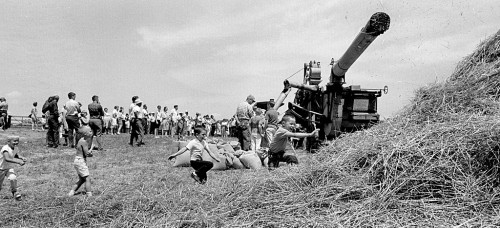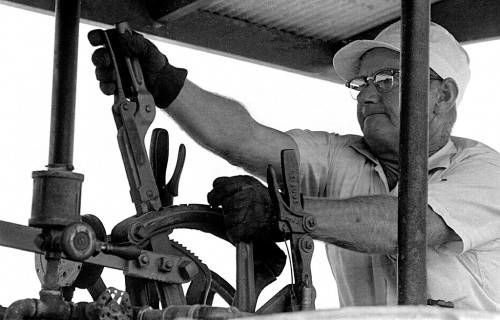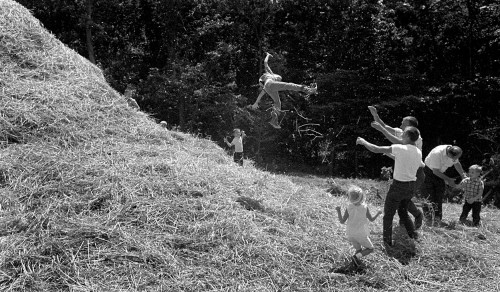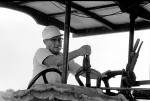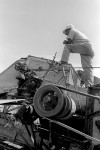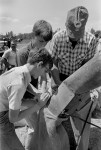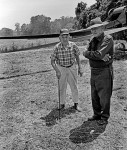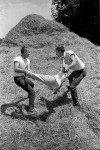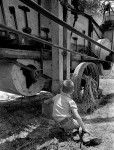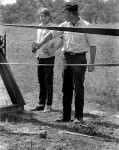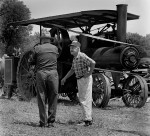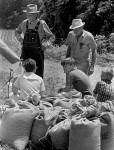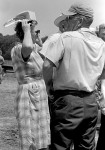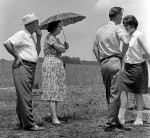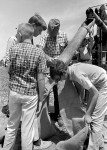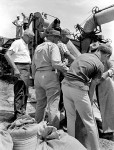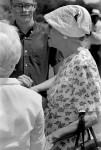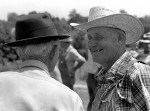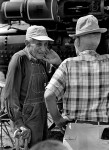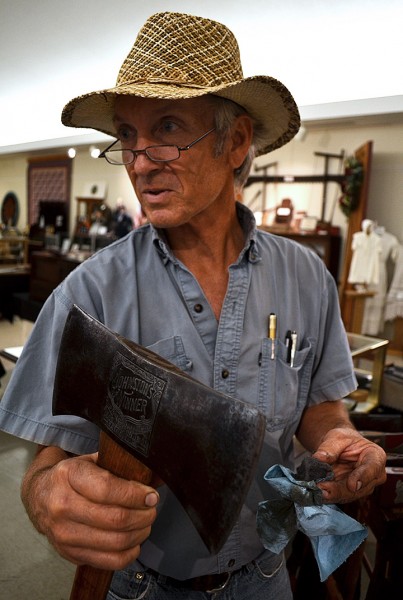 Last year about this time, I met Lyndon Moore at his exhibit of tools at the Altenburg Lutheran Heritage Center and Museum. Not only did he have a fabulous collection of vintage tools, he could tell you in minute detail every factoid related to them. The guy is also a natural storyteller.
Last year about this time, I met Lyndon Moore at his exhibit of tools at the Altenburg Lutheran Heritage Center and Museum. Not only did he have a fabulous collection of vintage tools, he could tell you in minute detail every factoid related to them. The guy is also a natural storyteller.
Dropped in on him
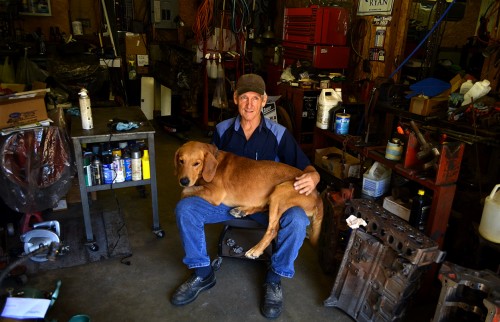 He made the mistake of saying, “If you’re ever down in Bloomfield, stop by.” I was IN Bloomfield on Monday and decided to take him up on his offer. With careful turn-by-turn directions over the cell phone by his wife, Margaret, I managed to find his shop on the outskirts of town.
He made the mistake of saying, “If you’re ever down in Bloomfield, stop by.” I was IN Bloomfield on Monday and decided to take him up on his offer. With careful turn-by-turn directions over the cell phone by his wife, Margaret, I managed to find his shop on the outskirts of town.
As soon as he sat down, a dog the size of a small pony hopped up on top of him. Lyndon said the 7-year-old got accustomed to being a lapdog when he was a puppy and never gave up the habit when his paws got almost as big as my hands.
Travel all over the country
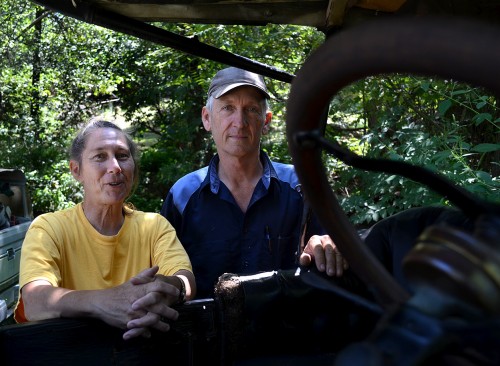 The couple are on the road all the time (along with their dogs) looking for more tools to add to their collection.They’re headed off to Indiana next.
The couple are on the road all the time (along with their dogs) looking for more tools to add to their collection.They’re headed off to Indiana next.
They are leaning on their drivable 1915 Model T. It’s not a restoration, Lyndon said. Most of the parts are original.
Driving was an art
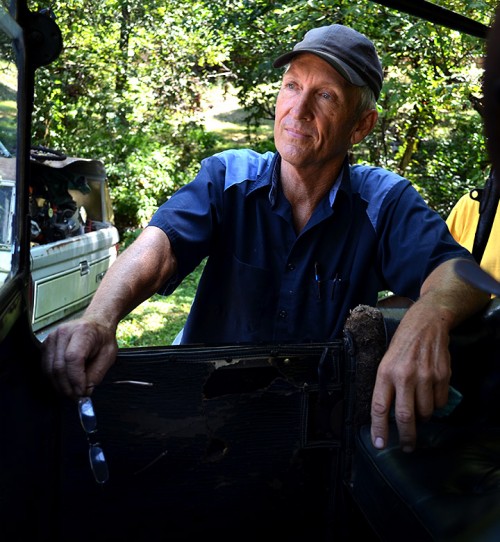 Looking down at the floorboard, I noted three pedals: “Gas, brake and clutch?” I hazarded?
Looking down at the floorboard, I noted three pedals: “Gas, brake and clutch?” I hazarded?
Not even close. The throttle was a lever on the steering column that looked like a turn signal. The pedals, in conjunction with the emergency brake handle and used in a mystifying combination would allow you to start, stop, go forward in two speeds, and back up. They could do 30 to 40 mph if the roads permitted, but few were that good.
Lefthanders had fewer broken arms
Lefthanders like Lyndon had an advantage. They were less likely to wind up with a broken arm if the engine kicked back when it was being hand-cranked.
The 1915 model had some major advances, like electric lights and an electric horn. Just to be safe, though, they kept the kerosene lights for backup.
I could have spent all afternoon with the Moores, but I had other folks to annoy.

